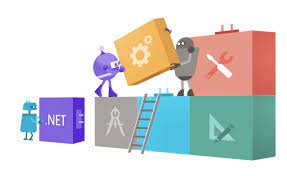
Unleashing the Power of .NET Core and C#: A Look into My Back-End Tech Stack
This blog post will focus on the back-end technology used in our software-as-a-service website. The back end is responsible for processing data and serving it to the front end, as well as handling user authentication, authorization, and data storage.
Tech Stack:
.NET Core: .NET Core is an open-source, cross-platform version of the .NET framework that provides a platform for building and running modern web applications. It enables us to create scalable and secure back-end services that can be easily integrated with our front-end code.
Blazor Server: Blazor Server is a framework for building web applications using C# and .NET. It enables us to create fast and responsive web pages by executing code on the server, rather than in the browser. Blazor Server provides a seamless experience for the user, as all processing takes place on the server, and updates are sent to the client over SignalR. In our back-end, we use Blazor Server to provide real-time updates to the front-end and create a dynamic and interactive user experience.
SQL Server: SQL Server is a relational database management system developed by Microsoft. It is widely used for storing and retrieving data in a highly organized and efficient manner. In our back-end, we use SQL Server as our primary database to store user data, application data, and other information required for our software-as-a-service website.
Database: The database is the backbone of our back-end technology. It stores all the data required for our website to function, including user information, application data, and other important information. By using SQL Server as our database management system, we are able to ensure that our data is highly organized, secure, and accessible to our front-end applications as needed.
Entity Framework Core: Entity Framework Core is a data access technology that enables us to work with databases using a high-level, abstracted model. It simplifies the process of working with data and reduces the amount of code we need to write to interact with our database.
Identity Server: Identity Server is a popular open-source framework for implementing authentication and authorization in .NET applications. It provides a comprehensive set of features for managing users and access to resources, making it easy to secure our back-end services.
SignalR: SignalR is a real-time communication library for .NET that enables real-time communication between the server and the client. In our back-end, we use SignalR to update the front-end in real-time and provide a seamless experience for the user.
Microsoft Azure: Microsoft Azure is a cloud computing platform that provides a wide range of services and tools for building, deploying, and managing web applications. We use Microsoft Azure to host our back-end services and take advantage of its scalability and reliability.
Conclusion:
This tech stack provides us with a powerful set of tools for building modern and scalable back-end services. By combining .NET Core, ASP.NET Core, and other technologies, we are able to create fast, secure, and scalable back-end services that provide a great experience for the user. Whether you're a seasoned developer or just starting out, we hope this article has provided you with a better understanding of the technology we use to build our software as a service website.
Written by: LightningBits
Published on February 06, 2023
Viewed: 1352